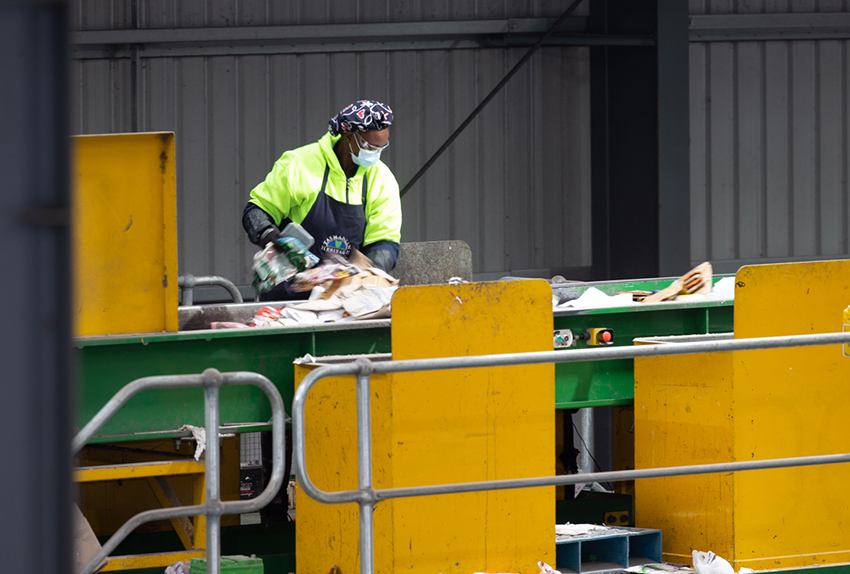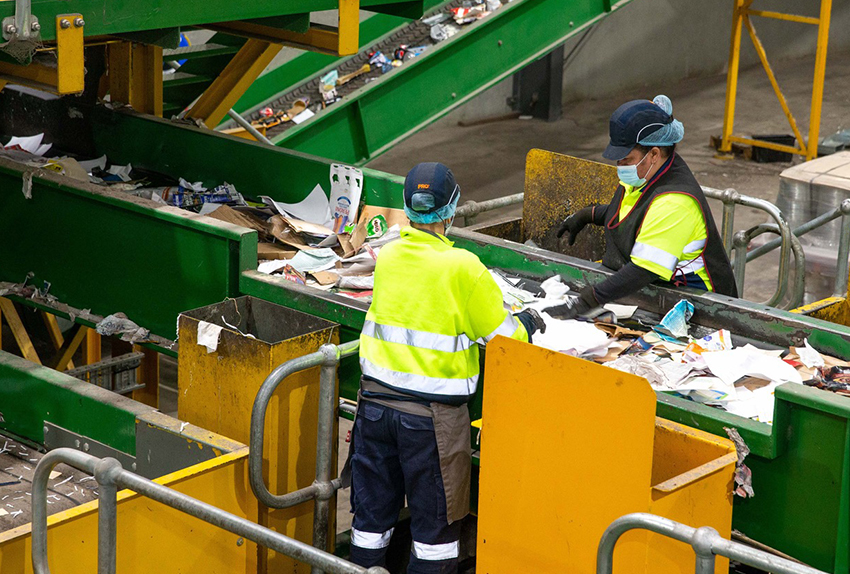The 6 Steps to Materials Recovery
How Does Material Recovery Work?

On arrival at APR Kerbside MRF, the collection truck ‘Tips off’ the mixed recyclable materials collected into the loading area.

An excavator or front-end loader is used to put the materials on to the belt. Materials travel up an incline belt and then fed onto conveyors to begin the ‘Pre-Sort’ journey along the line. The conveyors provide a constant feed of commingled material at a steady rate to the plant equipment. They are then separated by a combination of automatic and manual sorting.

At the pre-sort station, non-recyclable materials and contaminants are manually spotted, pulled out and discarded into storage bins below. The greater the number of contaminants in a particular load, the higher the chance that manual sorting will be required. This also results in slowing down the process.

The ballistic separator is used to identify 2-dimensional material from 3-dimensional material with long paddles. The 2D material walks up the paddles and falls over the screen. 3D items bounce back and off the screen onto a conveyor.

Manual sorting operations is provided to ensure the correct material is capture prior to the creation of a new bale of quality material.

Separated materials are compressed and baled, ready to be efficiently transported to different processing facilities. They can be re-made into new products and recycled packaging through local manufacturers.
The benefits of having a 4-bin system and no glass in the kerbside commingled recyclable stream means the quality of the processed end product is significantly improved.
